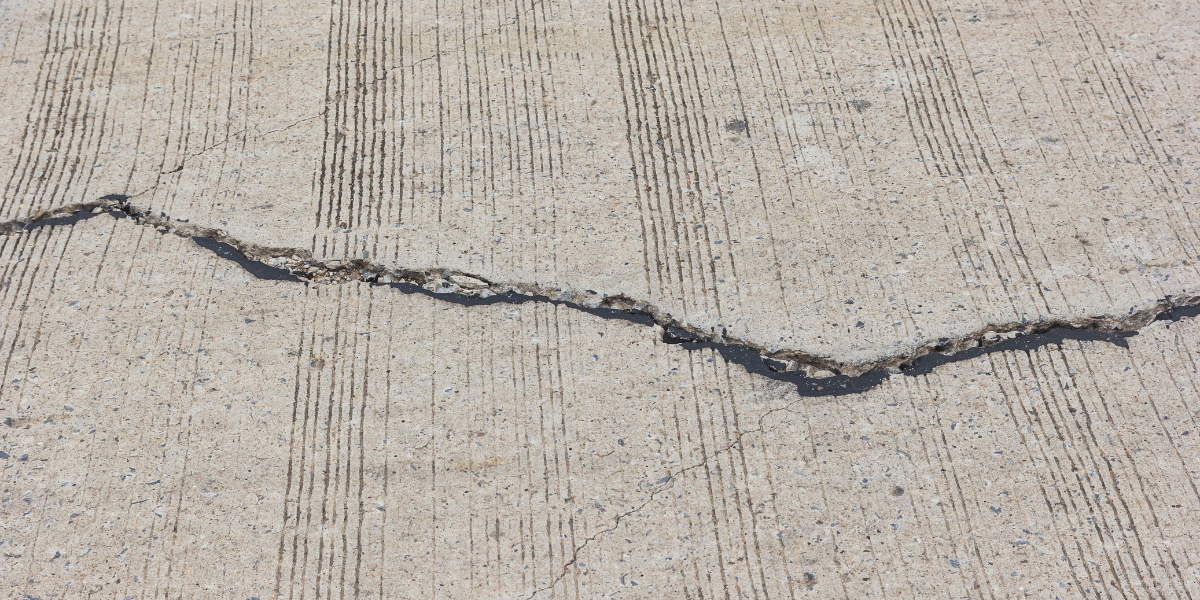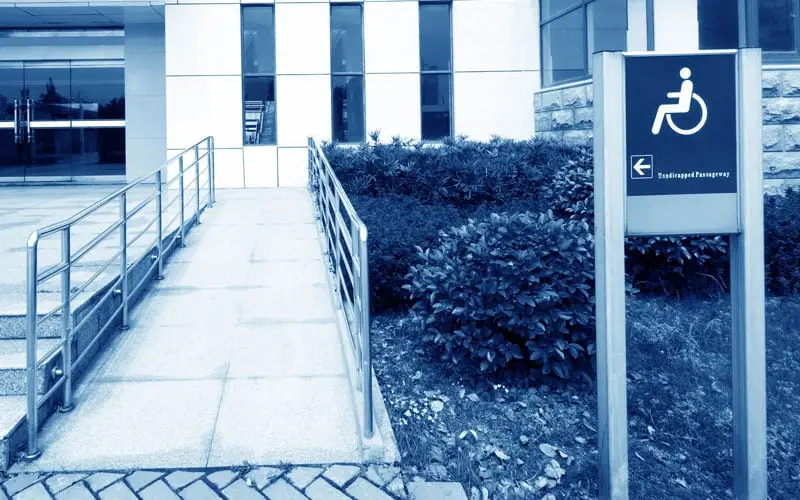Keeping your commercial property or residence within ADA-compliant guidelines is a must for any business. Sidewalks, patios, parking lots, and steps are all included in the required structures that must be kept free of the hazards of uneven concrete.
An Overview of ADA Concrete Compliance
ADA compliance refers to adherence to the Americans with Disabilities Act (ADA), a federal law enacted to ensure equal access and opportunities for individuals with disabilities. The ADA sets standards for accessibility in various areas, including public accommodations, commercial facilities, transportation, and state and local government services. It impacts a wide range of entities, including businesses, government agencies, property owners, architects, and construction companies.
Uneven concrete surfaces, such as sidewalks, curbs, ramp landings, and handrails, play a crucial role in ADA compliance as they directly affect accessibility for individuals with disabilities.
Here’s an overview of how ADA standards impact these elements:
ADA-Compliant Concrete Sidewalks
Did you know that rough surfaces and height differences greater than a quarter inch create a trip hazard and pose significant risks, particularly for visually impaired individuals?
ADA concrete guidelines specify that sidewalks must have a minimum width of three feet, though a sidewalk width of five feet or more is encouraged for wheelchair users. For sidewalks narrower than five feet, ADA requirements mandate passing spaces every 200 feet, with each passing space being at least 60 inches square.
Sidewalk joints are often the areas that require the most attention, as they can shift and create hazards over time. Our team specializes in making ADA-compliant sidewalks, addressing trip hazards, and restoring smooth, accessible paths that meet all ADA sidewalk requirements.
ADA-Compliant Curb Ramps
ADA concrete ramp requirements include a slope ratio of 1:12, ensuring a gentle incline for accessibility. While the material for curb ramps isn’t specified, it must meet slip resistance standards and be designed to prevent pooling water, as these factors impact usability and general safety.
In Houston’s humid climate, ramps can settle or deteriorate over time due to heavy foot traffic, weather conditions, and wear and tear. That’s why Leveled Concrete uses durable materials and precise construction methods to make sure all curbs meet ADA requirements (but more importantly, stand the test of time!)
There must be a landing at the top and bottom of the curb ramp. Additional compliance regulations include:
- All ramps must be level
- The landing must be as wide as the ramp, with a minimum width of 60 inches
ADA-Compliant Ramp Landings
According to ADA requirements, concrete ramps must be level and include landings at both the top and bottom of the ramp. These landings must be at least as wide as the ramp itself, with a minimum width of 60 inches to accommodate wheelchair users and others needing extra space to navigate comfortably.
Our team makes sure that all ramp landings are designed and built to meet these specifications. By paying close attention to slope, width, and the placement of landings, we help you provide a safe experience for all visitors.
ADA-Compliant Handrails
Handrails are required on both sides of curb ramps with a rise greater than six inches. The handrails must be securely anchored, easy to grip, and comply with height and spacing requirements. These features are absolutely a must for wheelchair users, individuals with limited mobility, and the visually impaired.
If you have uneven concrete and need to bring your home or business within ADA-compliant guidelines, call Leveled Concrete! We can schedule a free inspection to help walk you through your options.
Potential Penalties for Not Being ADA Concrete Compliant
Failure to comply with ADA concrete regulations can result in legal action, fines, and remediation requirements. The Department of Justice (DOJ) is responsible for enforcing ADA compliance and has the authority to investigate complaints and initiate legal proceedings against non-compliant entities. Depending on the severity and nature of the violation, penalties may include monetary fines, legal fees, and court-ordered remediation to bring the property into compliance with ADA standards.
Additionally, non-compliance with ADA regulations can damage the reputation of businesses and organizations, resulting in loss of customers, negative publicity, and potential legal liability. It’s essential for businesses, property owners, and entities subject to ADA concrete regulations to proactively ensure compliance to avoid the risk of penalties and legal consequences.

Let Leveled Concrete Help You Maintain ADA Compliance
ADA concrete compliance is crucial in promoting inclusivity and ensuring equal access for individuals with disabilities. By adhering to ADA concrete standards and addressing issues such as uneven surfaces, property owners and entities can create environments that are accessible and welcoming to everyone, regardless of their abilities.
ADA concrete sidewalks, patios, stairs, and curb ramps are used in many variations on commercial properties. Broken, cracked, and uneven concrete can create tripping hazards that are dangerous to those who may require assistance navigating your property. Replacing uneven concrete is often unnecessary, not to mention extremely cost-prohibitive. Let us help you level your concrete and stay fully compliant.
Contact us for a free inspection to see if you are ADA concrete compliant!
Our Service Area
Our outstanding team is ready to provide expert assistance for all your ADA concrete leveling projects in Houston, TX, and the surrounding counties within the Greater Houston region, including:
- Harris County, TX
- Fort Bend County, TX
- Galveston County, TX
- Chambers County, TX
- Liberty County, TX
- Montgomery County, TX
- Brazoria County, TX
- Waller County, TX
- Austin County, TX

